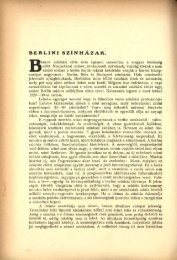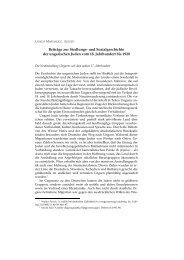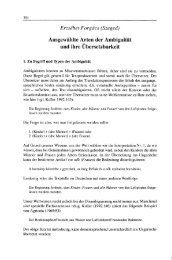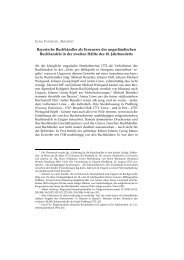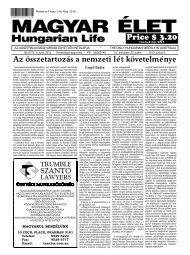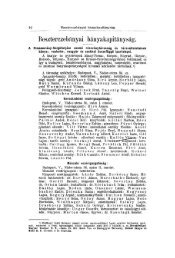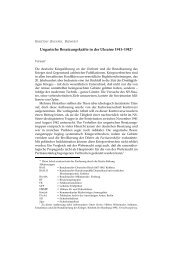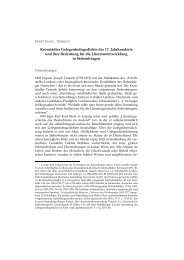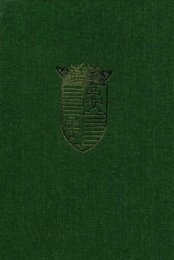hungarian studies - EPA - Országos Széchényi Könyvtár
hungarian studies - EPA - Országos Széchényi Könyvtár
hungarian studies - EPA - Országos Széchényi Könyvtár
Create successful ePaper yourself
Turn your PDF publications into a flip-book with our unique Google optimized e-Paper software.
32 LÁSZLÓ BORHI<br />
Nagy was his party's chief agricultural expert, which was not exactly a position of<br />
power in Rákosi's industrially minded Hungary; and until his promotion in Moscow<br />
Nagy was far removed from the highest echelons of the Hungarian communist<br />
leadership.<br />
Nagy's political, social and economic reform program had been more ambitious<br />
than Malenkov's because unlike his Soviet counterpart, Nagy had come to<br />
realize that the party itself was in crisis. 163 The Hungarian reformer's most drastic<br />
measures were directed at reorienting economic priorities. Nagy did not, however,<br />
desire to undo the institutional system of the centralized command economy,<br />
or to reestablish a market economy in any significant way. The "economic regulators"<br />
were restored in agriculture. In order to raise consumption, the 1954 plan<br />
reduced the amount allocated for investment by 17%, while at the same time boosted<br />
the share of agriculture in investments from 13% to almost 25%. Industrial investments<br />
in general were reduced from 46.3% to 352%, and the proportion of investments<br />
devoted to heavy industry within the category of industrial investment<br />
went down from 41% to 30%. 164 Peasants were allowed to leave agricultural cooperatives;<br />
and agricultural taxes were reduced, or tax breaks were granted, not<br />
only to cooperatives but to individual peasants as well. The amount of compulsory<br />
delivery was also reduced. Unfortunately, however, the country's economic<br />
indicators did not improve; and in some respects they actually got worse. For<br />
example, more maize was produced but significantly less wheat. Agriculture's<br />
share in the gross national product did not change. 165 In fact, the nation's GNP<br />
stagnated. Furthermore, in 1954 Hungary's indebtedness to the West increased<br />
significantly. The foreign debt expanded because the country was unable to sell in<br />
foreign markets the planned amount of goods in order to offset the growing import<br />
of agricultural products and raw materials necessary for its industry. The<br />
economic difficulties made it much easier for Rákosi's "old guard" to conspire<br />
against Nagy in Moscow and to attack his policies at home. Rákosi did not hide<br />
his aversion to any reform of hard-line Stalinism and spoke out for the continuation<br />
of heavy industrialization not long after that policy had been disavowed in the<br />
Kremlin. The conflict within the Hungarian leadership was becoming so tense<br />
that less than a year after the June 1953 consultation a new one was to be held in<br />
Moscow. This new consultation may have been initiated by Rákosi. The screenplay<br />
was the same as before: the masters of the Kremlin listened to report on the<br />
Hungarian situation, which was delivered by the head of the HWP. The Soviet<br />
leaders then passed judgment and gave voice to their policy guidelines. The meeting<br />
took place on May 5,1954 and, among others, included Malenkov, Khrushchev,<br />
Voroshilov, Kaganovich, Bulganin, Mikoyan, and Suslov from the Soviet Union<br />
and Rákosi, Nagy, Gerő, and Farkas from the Hungarian side. 166 Khrushchev and<br />
Voroshilov were interested in the question of unity within the Political Committee;<br />
Kaganovich inquired about the class struggle in the countryside and in the


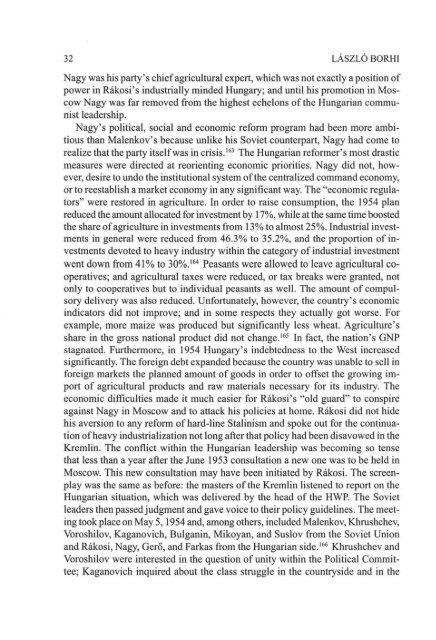
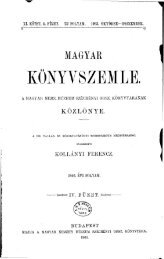
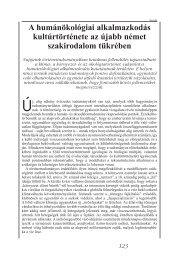
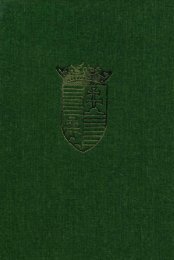
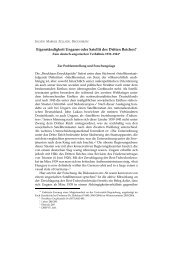
![Letöltés egy fájlban [36.8 MB - PDF] - EPA](https://img.yumpu.com/23369116/1/172x260/letoltes-egy-fajlban-368-mb-pdf-epa.jpg?quality=85)
